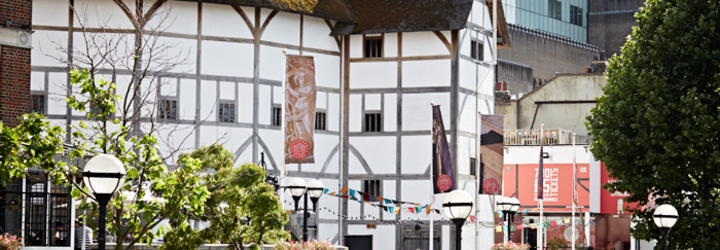
Lighting Skin Tones in Theatre
ALD Chair Johanna Town reacts to the recent news story in the Telegraph by Dr Farah Karim-Cooper, the Head of Higher Education & Research at Shakespeare’s Globe, where she argued that 'Traditional' theatre lighting and stage design discriminates against black and Asian actors. The original story, printed in the The Telegraph, can be read here
"In more than 25 years as a lighting designer, I’ve lit many stages and a great deal of faces and sets. I feel offended by the warning from The Globe’s Dr Karim-Cooper, about casting ethnic minority actors without paying attention to the way they are lit. The irony cannot be lost coming from a voice within The Globe where the decision has been made to turn away from professional lighting design; choosing to illuminate the stage solely to recreate the flat light of daylight and take no consideration to the actor performing under those lights.
If she had any understanding of lighting within theatre she would understand that this is not a BAME issue. Referring broadly Black & Asian actors, has she looked at a mixed-race company? Or an all-black company for that matter? The range of skin tones is generally huge and diverse and cannot really be lumped into one board category.
Dr Karim-Cooper advises that ‘Different combinations of lighting colours can be used for different skin tones’.
Choosing the right light and colour for that light is not dependent on the diversity of the cast but dependent simply on the cast. There are so many more issues than skin tone! The colour of an actor’s hair, or sometimes worse: no hair; a beard or deep-set eyes or even bushy eyebrows must all be accounted for. As a lighting designer, every feature is equally noted and is as important as the set and costumes.
For decades, lighting designers have been successfully and creatively lighting Shakespeare’s plays.– Plays which not only include Black and Asian actors, but pale-skinned actors too, alongside the many characters Shakespeare included in his works, such as donkeys and fairy kings. It is the lighting designer’s job to light plays to their best advantage. Lighting sets the tone of the performance, creates a space, bringing atmosphere and shape to the stage, it keeps the audience focused on the performance.
The title of the article in ‘The Telegraph’ refers to ‘traditional’ lighting design being at fault. Whilst this is discriminatory, what is meant by ’traditional lighting design’? Does Dr Karim-Cooper mean the use of the tungsten light sources which have been lighting actors for nearly a century? Because it is the ‘traditional’ tungsten lighting that achieves the most successful lighting of varying skin tones. Tungsten has a CRI of 100% so because it emits all wavelengths of the visible spectrum it renders colour with a ‘truth’ that no other lamp can match… and that's particularly crucial to making the widest variety of skin tones appear natural.
Once these lights are legislated out to create better efficiency, the cast on a stage will be at the mercy of the newer LED lighting or ‘modern lighting’ - as stated in the article – that emits a higher level of green and blue hue. These fixtures will further impact our ability to treat skin tones sympathetically. Indeed, the impact is genuinely negative until a truly tungsten equivalent is available for use as standard.
The lighting of theatre and the lighting of cinematic films are also not directly comparable. In film it is possible to light on a shot by shot basis, which is just not the case in the theatre. Yet a professional lighting designer will still draw upon every tool and skill they have learned to bring scene by scene the most flattering light.
This point leads me to my final one, and one where Dr Karim-Cooper and myself are in agreement. Elements intrinsic to staging such as lighting design are not given enough space and time. Karim-Cooper says, ‘Producers are now being urged to pay more attention to the set design, lighting and costume used in plays featuring ethnic minority actors, in order for the audience to get the most out of their performances’, and I wholeheartedly agree. Lighting is always the final element to be introduced to the production. Modern equipment is complicated to program but the subtle shifts of tone that can be produced between scenes or even between actors can make a difference to any actor’s complexion. This requires time to achieve, however, and time I would very much enjoy having because it can only make the work we strive to produce even better."






